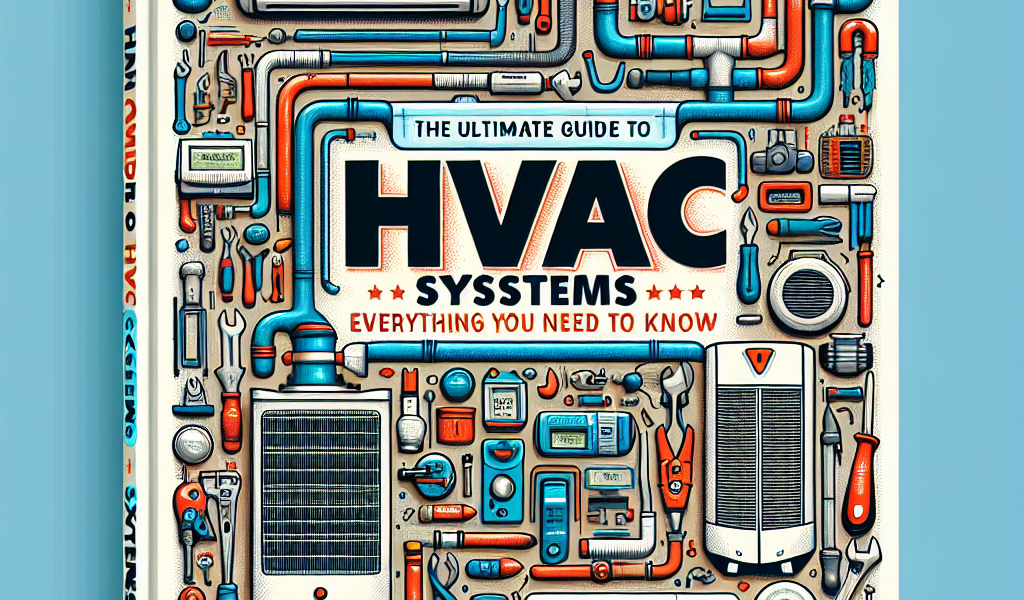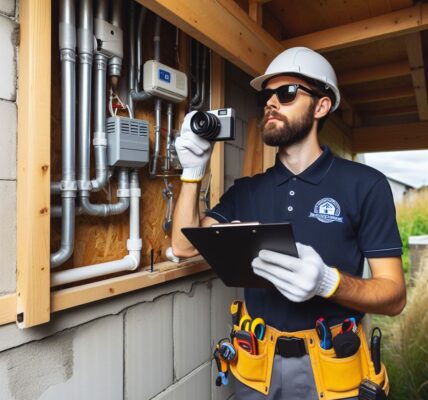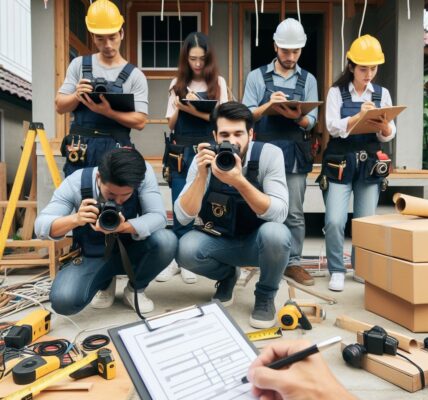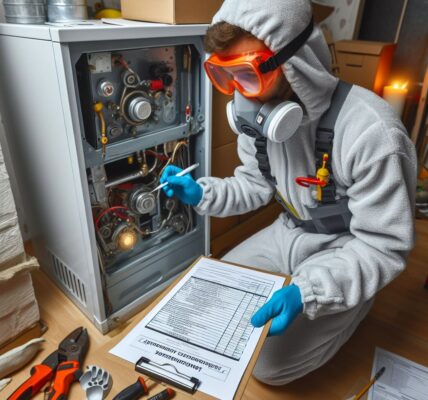Everything You Need to Know is a comprehensive resource that provides detailed information about Heating, Ventilation, and Air Conditioning (HVAC) systems. This guide aims to equip readers with the necessary knowledge and understanding of how these systems work, their components, types, energy efficiency, maintenance tips, troubleshooting techniques, and more. Whether you are a homeowner or a professional in the field, this guide will serve as an invaluable reference for all your HVAC-related needs.

The Importance of Regular HVAC Maintenance
In order to ensure that your HVAC system is running at its peak performance, regular maintenance is essential. A well-maintained HVAC system not only provides better comfort and air quality but also helps in reducing energy consumption and increasing the lifespan of the equipment.
One of the main reasons why regular maintenance is important for an HVAC system is to prevent breakdowns and costly repairs. Just like any other mechanical equipment, over time, wear and tear can occur in an HVAC system. This can lead to various problems such as clogged filters, leaks in ductwork, or malfunctioning components. Regular maintenance allows these issues to be identified early on before they become major problems that require expensive repairs.
Another key benefit of regular maintenance is improved energy efficiency. An HVAC system that isn’t properly maintained can consume more energy than necessary, leading to higher utility bills. During a routine maintenance check-up, a technician will clean dirty coils, replace worn-out parts if needed, and make sure that all components are functioning optimally. By ensuring that your HVAC system runs efficiently, you can save money on energy costs while still maintaining a comfortable indoor environment.
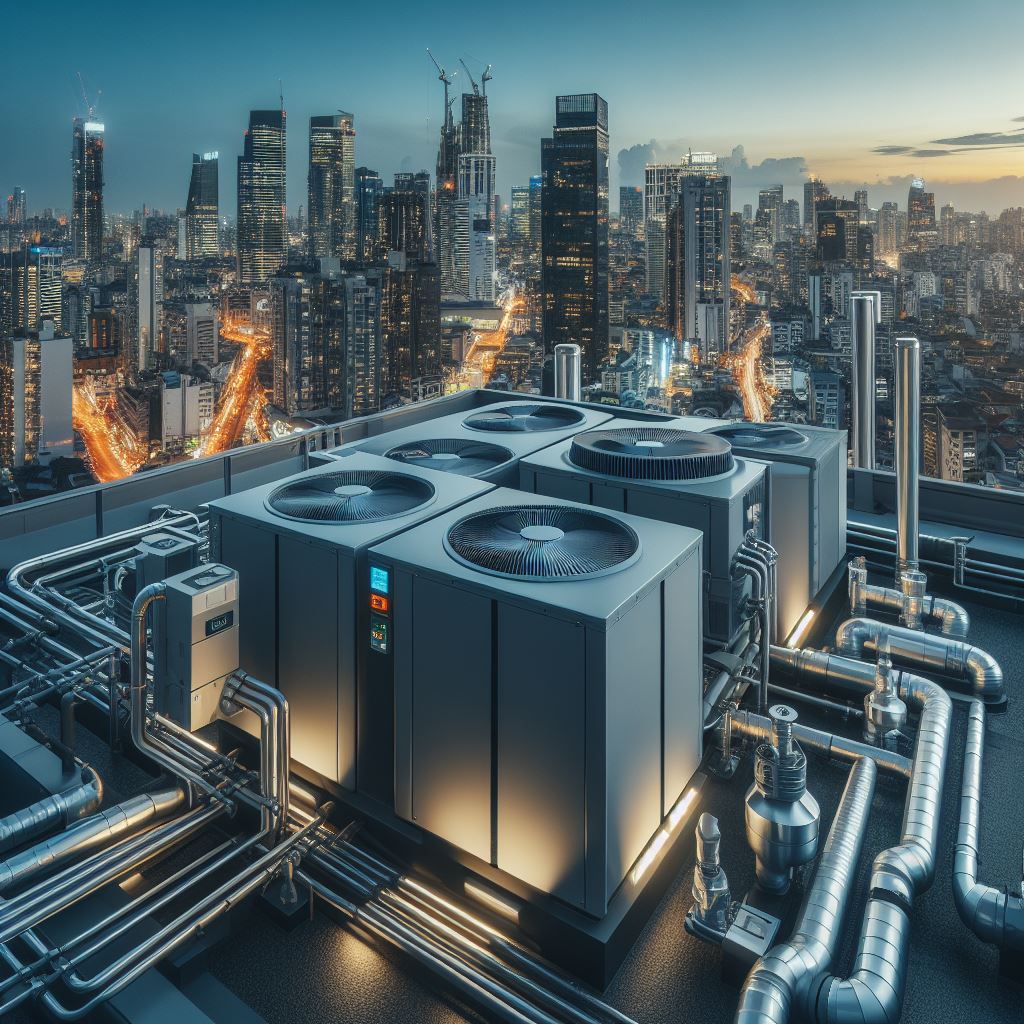
Furthermore, regular maintenance contributes to better indoor air quality. The filters in an HVAC system play a crucial role in trapping dust particles, allergens, mold spores,and other pollutants from circulating inside your home or office space. Over time these filters get clogged with debris which decreases their effectiveness in purifying the air. During routine maintenance visits by trained professionals who know how to handle sensitive components without damaging them,your filter will be cleaned or replaced as needed.This keeps airborne contaminants at bayand maintains good air quality for you and your family’s health.
Regularly scheduled check-ups also help extend the lifespan of an HVAC unit.Routine cleaning,maintenance,and inspections keep every part operating smoothly.The minor adjustments made during servicing alleviate undue stress on specific components.Less strain means less chance for failure and ultimately a longer lifespan for your system.Regular maintenance ensures that any potential problems are caught early on, minimizing the likelihood of major breakdowns that may necessitate premature replacement.
To make sure you don’t forget to schedule regular HVAC maintenance, consider signing up for a service agreement with an HVAC contractor. A service agreement typically includes annual check-ups and tune-ups, priority scheduling in case of emergencies,and discounts on repairs or equipment replacements.This not only saves you time but also gives you peace of mind knowing that your HVAC system is in good hands and being properly maintained by professionals.
In conclusion, regular maintenance is vital for the optimal performance and longevity of an HVAC system. It helps prevent costly breakdowns,reduces energy consumption,promotes better air quality,and extends the lifespan of the equipment. By investing in routine maintenance,you are ensuring that your HVAC system works efficiently,cost-effectively,and reliably year-round.Letting professionals handle these tasks eliminates guesswork and guarantees all necessary measures have been taken to ensure seamless operation.Hence,it’s clear that regular maintenance should never be overlooked when it comes to maintaining a comfortable indoor environment.
Choosing the Right Size HVAC System for Your Home
The process of choosing the right size HVAC system for your home is a crucial step in ensuring optimal comfort and energy efficiency. An HVAC system that is too large will result in excessive energy consumption and higher utility bills, while one that is too small may struggle to adequately heat or cool your space. To determine the correct size for your HVAC system, several factors must be considered.
One of the primary considerations when selecting an HVAC system size is the square footage of your home. A larger house requires a more powerful system to effectively heat or cool every room. However, it’s not as simple as merely matching the square footage with a corresponding unit size. Other variables come into play that can impact the overall capacity needed.
Insulation plays a significant role in determining how much heating or cooling power you’ll need from your HVAC system. Well-insulated homes retain their desired temperature more efficiently than poorly insulated ones, thus requiring less output from the heating or cooling units. It’s essential to assess insulation levels and factor them into the sizing calculation.

Climate also influences which size HVAC system suits your needs best. Regions with extreme temperatures require larger systems capable of handling both freezing winters and scorching summers. Conversely, areas with milder climates can get by with smaller units designed primarily for moderate temperature ranges.
Besides these key factors, other elements such as ceiling height and number of windows should also be considered when selecting an appropriately sized HVAC unit. Higher ceilings necessitate more substantial airflow to maintain consistent temperatures throughout a room, while windows contribute to heat gain during warmer months.
To accurately calculate what BTU (British Thermal Units) rating your air conditioner should have based on these factors, you can turn to professional load calculations conducted by certified technicians who employ specialized software programs specifically designed for this purpose. These calculations take into account all relevant variables mentioned earlier along with various other parameters like occupancy rate and appliance usage patterns.
It’s important not to rely solely on rule-of-thumb estimations or the size of your previous HVAC system. Over- or undersizing an HVAC unit can lead to significant inefficiencies and discomfort within your home.
While larger units may seem like a better choice, especially for those living in regions with extreme climates, they often cycle on and off more frequently, leading to increased wear and tear on components. Additionally, short-cycling decreases energy efficiency as systems spend less time operating at peak efficiency levels.
On the other hand, undersized units continuously struggle to meet demand. They run longer than necessary and consume more energy in attempting to reach the desired temperature. The result is higher utility bills and reduced comfort due to inadequate heating or cooling capacities.
By carefully considering square footage, insulation levels, climate conditions, ceiling height, number of windows, load calculations conducted by professionals using specialized software programs tailored for this purpose can determine the appropriate size HVAC system for your home accurately. Avoiding over- or under-sizing will ensure optimal comfort while promoting long-term energy savings.
Understanding Different Types of HVAC Systems
When it comes to maintaining a comfortable indoor environment, having an efficient and effective heating, ventilation, and air conditioning (HVAC) system is essential. However, with so many different types of HVAC systems available on the market today, it can be overwhelming for homeowners to choose the right one for their specific needs. In this section of our ultimate guide to HVAC systems, we will delve into the various types of HVAC systems commonly used in residential and commercial settings.
One of the most common types of HVAC systems is the split system. As its name suggests, a split system consists of two main components – an outdoor unit that contains the condenser and compressor, and an indoor unit that houses the evaporator coil. These two units are connected by refrigerant lines that circulate cool or warm air throughout the space via ductwork or vents. Split systems are highly versatile and can accommodate a wide range of applications.
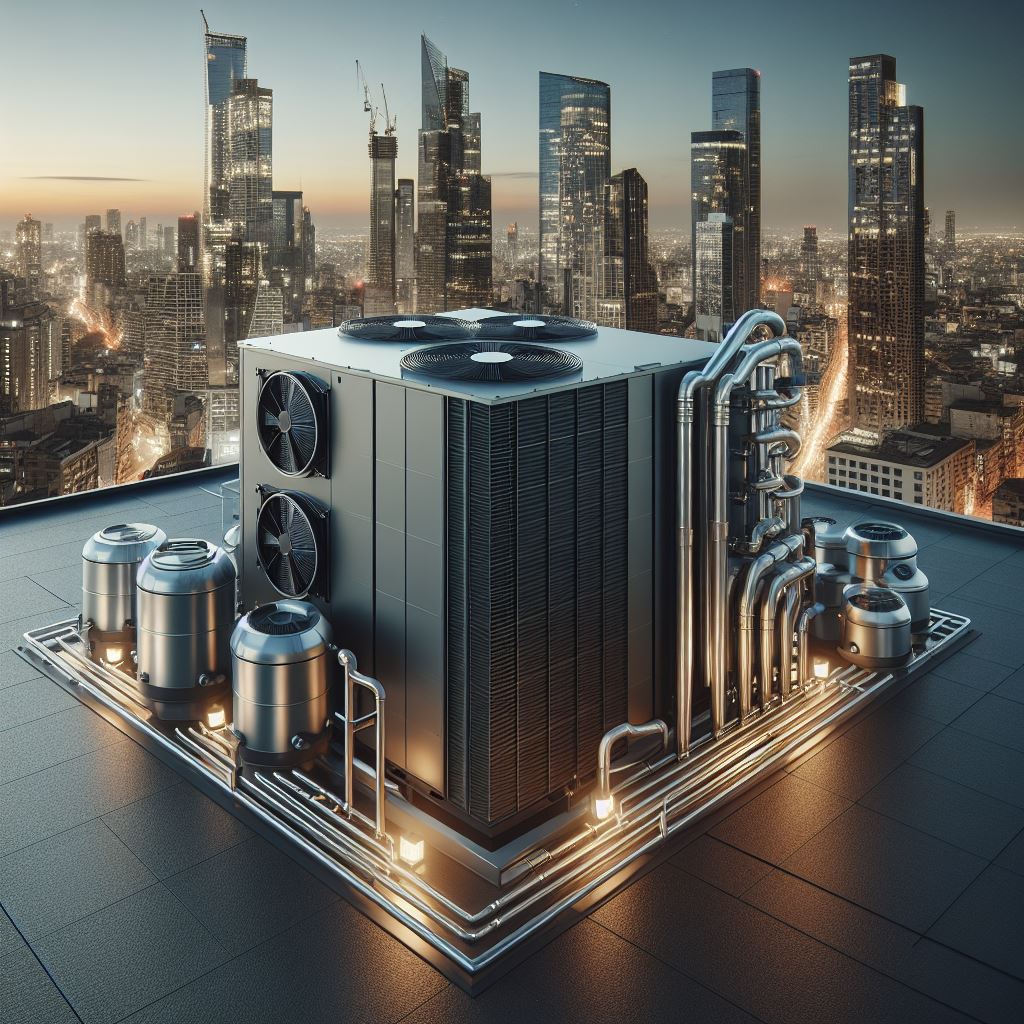
Another type of HVAC system frequently used in larger buildings or multi-story homes is called a rooftop unit (RTU). As its name implies, RTUs are located on rooftops instead of being installed inside a building’s interior space. This configuration allows for easy maintenance access while saving valuable real estate indoors. RTUs typically contain all necessary components within a single housing unit – including compressors, fans, filters, and controls – making them convenient and cost-effective options for many commercial applications.
For those seeking greater energy efficiency without sacrificing comfort levels, geothermal heat pumps may be worth considering. Geothermal heat pumps utilize renewable energy from below-ground sources such as soil or water bodies to provide both heating and cooling capabilities. By tapping into stable underground temperatures year-round regardless of outdoor weather conditions geothermal heat pumps offer significant energy savings compared to traditional systems relying solely on electricity or fossil fuels.
Ductless mini-split systems have gained popularity in recent years due to their flexibility and zoning capabilities. Unlike traditional HVAC systems that rely on ductwork to distribute air, mini-splits use individual units installed in specific rooms or zones. Each unit consists of an indoor air-handling unit connected directly to an outdoor compressor/condenser unit via a refrigerant line. With this setup, occupants can independently control the temperature and airflow within each zone, resulting in increased energy efficiency and personalized comfort levels.
Lastly, we have packaged HVAC systems which are compact units containing all necessary components within a single housing. These self-contained systems are commonly used in smaller residential or commercial spaces where space limitations exist. Packaged HVAC systems can be classified into two main categories: gas-electric units that combine heating functions with electrical cooling capabilities, and heat pump units that provide both heating and cooling through electricity-driven mechanisms.
In conclusion, understanding the different types of HVAC systems is crucial for homeowners and business owners alike who seek optimal comfort while minimizing energy consumption. From split systems to geothermal heat pumps, rooftop units to ductless mini-splits, there is a wide array of options available to suit various needs and requirements. By familiarizing yourself with these different types of HVAC systems, you can make informed decisions when it comes time for installation or upgrades – ensuring long-term satisfaction with your chosen system’s performance while enjoying energy savings at the same time.
Energy-Efficient Options for Heating and Cooling
In today’s world, energy efficiency has become a paramount concern for many homeowners. With rising energy costs and the increasing need to reduce our carbon footprint, finding energy-efficient options for heating and cooling our homes is more important than ever. Luckily, there are several HVAC systems available that can help you achieve both comfort and sustainability.
One of the most popular options for energy-efficient heating and cooling is a geothermal heat pump system. This system utilizes the constant temperature of the earth to provide year-round comfort in your home. By using underground pipes filled with a refrigerant solution, the heat from the ground can be extracted during winter months to warm your home, while during summer months, excess heat can be transferred back into the ground to cool your living spaces. Geothermal heat pumps are highly efficient because they don’t rely on burning fossil fuels or consuming large amounts of electricity like traditional heating and cooling systems.
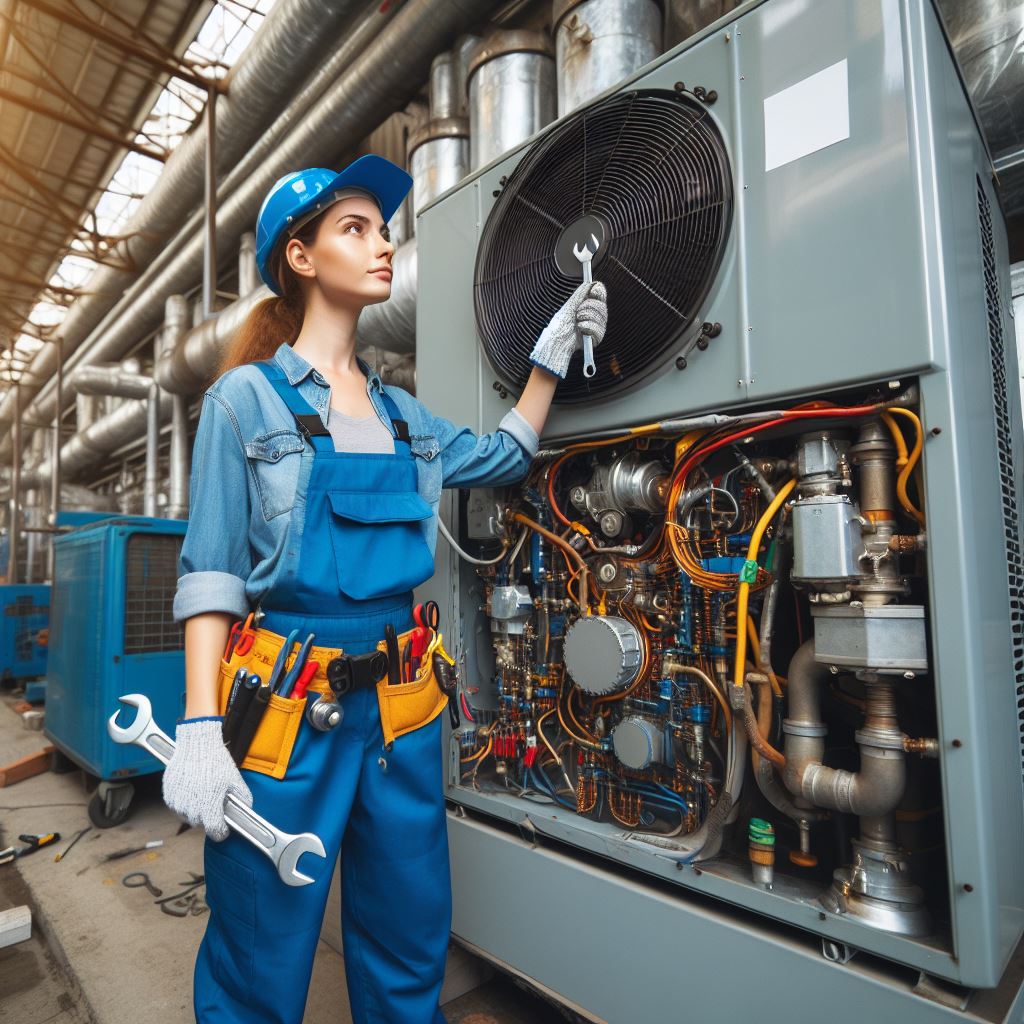
Another option for energy-efficient heating and cooling is a ductless mini-split system. Unlike central HVAC systems that use ductwork to distribute conditioned air throughout your home, ductless mini-splits consist of individual units installed in each room or zone you want to control independently. These units are connected to an outdoor compressor unit via small refrigerant lines, eliminating any potential losses associated with leaky or poorly insulated ducts. By allowing precise temperature control in different areas of your home based on occupancy patterns, you can significantly reduce wasted energy compared to traditional central systems where unused rooms still receive conditioned air.
Heat recovery ventilators (HRVs) offer yet another avenue towards achieving optimal indoor comfort without sacrificing efficiency. HRVs bring fresh outside air into your home while simultaneously removing stale indoor air by utilizing a counterflow heat exchanger that transfers heat from outgoing air to incoming air stream through separate channels without mixing them together directly – this way preserving desired indoor temperatures regardless of weather conditions outside.
For those looking for a more traditional HVAC system, high-efficiency furnaces and air conditioners are worth considering. These systems utilize advanced technology to minimize energy waste during operation. High-efficiency furnaces use modulating burners and variable-speed blowers to deliver precise amounts of heat while consuming less fuel. On the other hand, high-efficiency air conditioners incorporate features like variable-speed compressors and thermal expansion valves that allow them to adapt their cooling capacity according to demand, saving energy in the process.
Regardless of which option you choose for your home, it’s crucial to remember that proper installation and regular maintenance are key factors in maximizing efficiency. Ensuring that ductwork is properly sealed or insulated, monitoring refrigerant levels, cleaning filters regularly – these are all necessary steps towards achieving optimal performance from your HVAC system.
In conclusion, when it comes to heating and cooling our homes efficiently, there is no shortage of options available today. From geothermal heat pumps harnessing the Earth’s natural temperature to ductless mini-split systems offering zoned comfort control, homeowners have several avenues they can explore. Whether you prefer a cutting-edge solution or a more conventional approach with high-efficiency equipment installed by professionals who adhere strictly by recommended practices – finding an energy-efficient HVAC system is not only possible but also highly beneficial for both your wallet and the environment
Benefits of Programmable Thermostats in HVAC Systems
Programmable thermostats have revolutionized the way we control and manage our HVAC systems. Gone are the days of manually adjusting temperature settings throughout the day; instead, programmable thermostats offer a level of convenience and energy efficiency that was previously unimaginable. In this section, we will explore the numerous benefits of using programmable thermostats in HVAC systems.
One of the most significant advantages of programmable thermostats is their ability to save energy and reduce utility costs. By allowing users to program specific temperature settings for different times of the day, these devices enable us to optimize energy usage according to our daily routines. For example, during work hours when nobody is at home, a programmable thermostat can automatically raise or lower the temperature setting to conserve energy. This feature not only saves money on heating or cooling bills but also reduces our carbon footprint by minimizing unnecessary energy consumption.
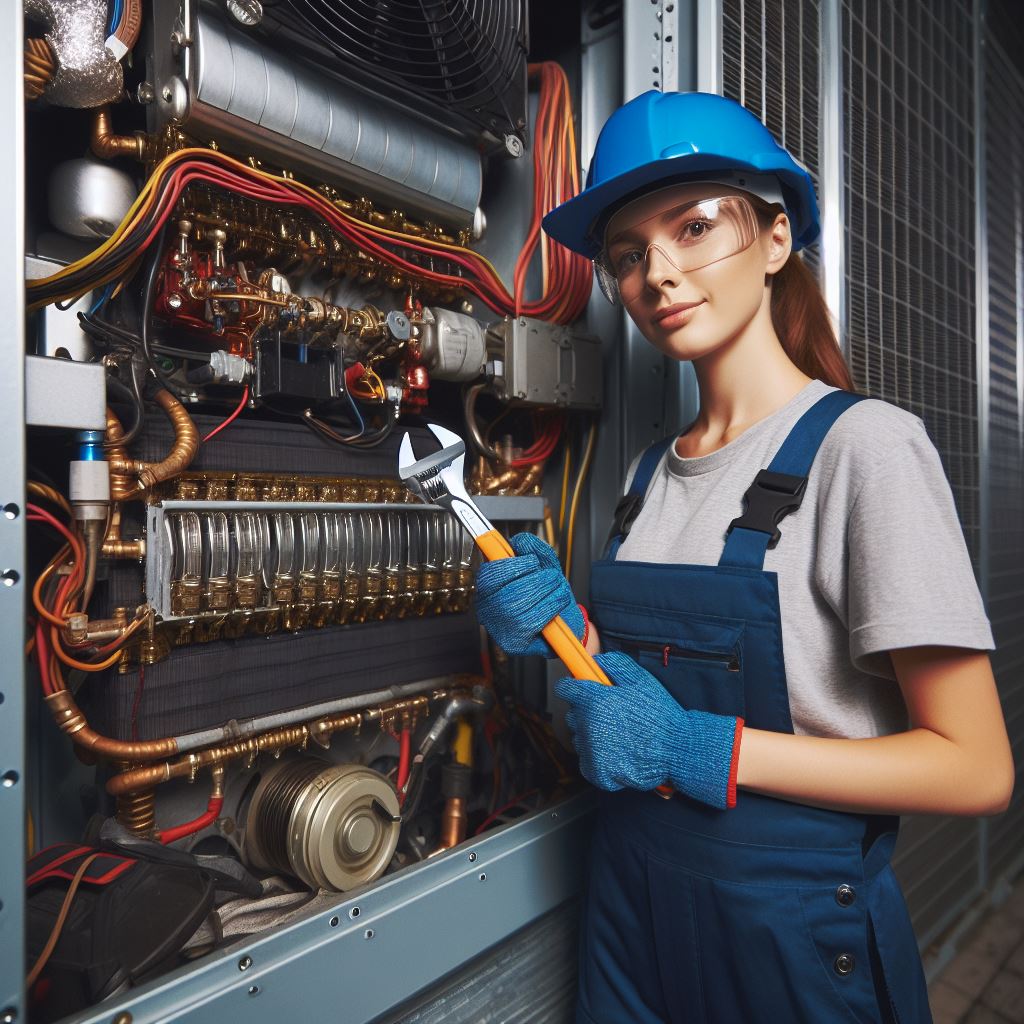
Furthermore, programmable thermostats provide unparalleled comfort and convenience. With these devices, you can preset your desired temperature for various periods throughout the day – such as waking up in the morning or returning home from work – ensuring that your living space is always at an optimal comfort level without any manual adjustments needed. This seamless automation enhances overall user experience by eliminating unnecessary discomfort caused by fluctuating temperatures.
In addition to cost savings and improved comfort levels, programmable thermostats also extend the lifespan of HVAC systems themselves. By reducing wear and tear through controlled operation schedules, these devices prevent excessive strain on HVAC components like compressors or motors – thus increasing their longevity and avoiding costly repairs or replacements down the line.
Moreover, another advantage of utilizing a programmable thermostat is its compatibility with smart home technology integration. These advanced devices can be connected to other smart home devices such as smartphones or voice-activated assistants like Amazon Alexa or Google Home. This connectivity allows homeowners even more flexibility and control over their HVAC system remotely – enabling them to adjust temperature settings while away from home or even through voice commands. This added convenience further enhances the overall functionality and usability of programmable thermostats.
Furthermore, many programmable thermostats come equipped with energy usage tracking features, providing homeowners with detailed reports on their HVAC system’s energy consumption patterns. These insights allow users to make more informed decisions regarding energy-saving strategies and identify potential areas for improvement in their heating and cooling systems. By utilizing this data, homeowners can optimize their energy usage to maximize efficiency and reduce costs over time.
In conclusion, programmable thermostats offer a multitude of benefits when integrated into HVAC systems. From significant cost savings on utility bills to increased comfort levels and extended equipment lifespan, these devices provide an unparalleled level of control and convenience for homeowners. Furthermore, compatibility with smart home technology integration allows for seamless automation while enabling remote access to temperature settings. Additionally, the ability to track energy usage provides valuable insights that empower users to make informed decisions about optimizing their HVAC system’s efficiency. Overall, investing in a programmable thermostat is a wise choice for anyone looking to enhance both their comfort and sustainability in managing their HVAC system efficiently.
Common HVAC Problems and How to Troubleshoot Them
In every homeowner’s life, there comes a time when the trusty HVAC system starts acting up. These complex systems are prone to occasional malfunctions, but luckily most issues can be resolved with some troubleshooting. This section of our ultimate guide aims to shed light on common HVAC problems and provide you with practical solutions.
One of the most prevalent issues is poor airflow in your home. If you notice weak air coming out of your vents or uneven cooling/heating, it may indicate a clogged filter or blocked ductwork. Start by checking the air filters; if they are dirty, replace them promptly as restricted airflow can strain your system and compromise its efficiency. Additionally, inspecting the registers for any obstructions such as furniture or curtains could also help improve airflow.
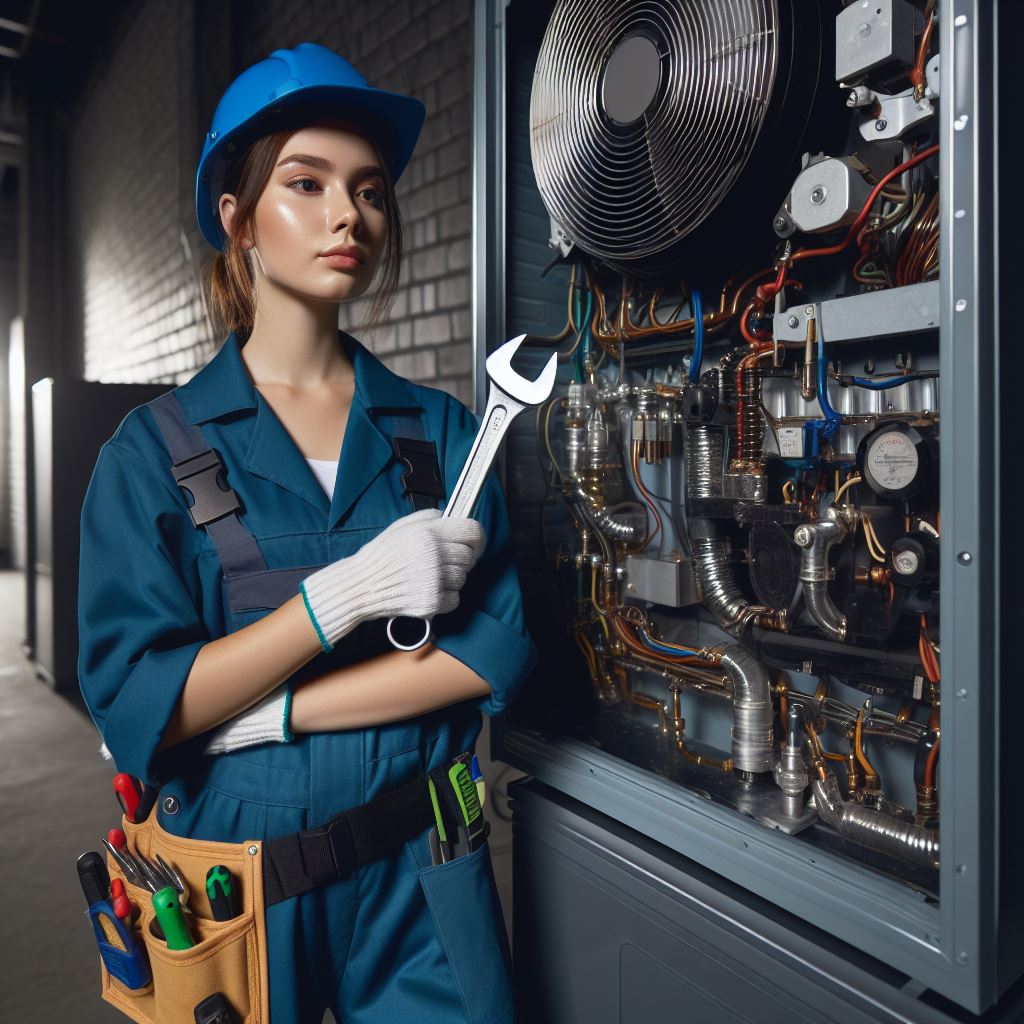
Another typical problem is an unresponsive thermostat. When your HVAC system fails to turn on or off according to temperature settings, it might mean that either the thermostat needs calibration or replacement. Begin by checking if the thermostat is set correctly; sometimes a simple adjustment can do wonders. However, if that doesn’t solve the issue, try replacing batteries if applicable since low power can cause malfunctions too.
If you find water pooling around your indoor unit or notice leaks from pipes connected to it, you’re likely dealing with a condensate drain problem. The condensate drain line can get clogged due to dust accumulation and debris over time. In this case, clearing out any blockages using a stiff brush or vacuum cleaner should restore normal drainage function.
Noisy operation is another common nuisance homeowners encounter in their HVAC systems. If strange sounds like rattling, squealing, or banging occur during operation, identifying their source becomes crucial for effective troubleshooting. Often loud noises stem from loose components such as fan blades or belts that require tightening/replacement by professionals.
A malfunctioning compressor is yet another issue faced by homeowners relying on HVAC systems. If your system fails to cool or heat properly, and the outdoor unit’s fan is not spinning, it might indicate a problem with the compressor. This crucial component can experience electrical failures or refrigerant leaks that require immediate attention from qualified technicians.
Lastly, inconsistent temperature control is a problem that many homeowners struggle with. When certain rooms feel significantly warmer or colder than others despite adjusted thermostat settings, the issue may lie in improperly balanced dampers or leaky ductwork. Adjusting dampers to allow equal airflow distribution and sealing any gaps in duct joints using metal tape can help resolve this common problem.
In conclusion, while HVAC problems may cause inconvenience and discomfort, they are often solvable through troubleshooting techniques. By recognizing symptoms such as poor airflow, unresponsive thermostats, water leaks, noisy operation, malfunctioning compressors, or inconsistent temperature control – homeowners can take appropriate measures to troubleshoot these issues effectively. Regular maintenance and professional inspections also play a vital role in preventing future problems and ensuring your HVAC system operates optimally year-round. So equip yourself with knowledge about potential problems you may encounter in your HVAC system – after all being prepared is half the battle won!
Tips for Extending the Lifespan of Your HVAC System
HVAC systems play a crucial role in maintaining a comfortable living or working environment. However, like any other mechanical system, they require regular maintenance to ensure their longevity and efficiency. In this section, we will provide you with some valuable tips for extending the lifespan of your HVAC system.
Firstly, it is essential to schedule regular inspections and maintenance by professional technicians. These experts can identify any potential issues before they become major problems that could lead to system failure. Regular maintenance includes cleaning or replacing filters, checking refrigerant levels, inspecting electrical connections, lubricating moving parts, and ensuring proper airflow.
Secondly, keeping the outdoor unit clean is another important factor in increasing the lifespan of your HVAC system. The outdoor unit accumulates dirt, leaves, and debris over time which can hinder its performance. Therefore, it is advisable to regularly clean the unit using a hose or brush to remove any obstructions that might restrict airflow.
Additionally, maintaining consistent airflow throughout your home or office is vital for optimal HVAC performance and durability. Ensure that all vents are open and unobstructed by furniture or other objects as this ensures efficient air circulation within the space. Moreover, make sure that doors and windows are properly sealed to prevent drafts which can put additional strain on your HVAC system.
Furthermore, installing programmable thermostats offers several benefits for both comfort and energy efficiency. By programming specific temperature settings based on occupancy patterns during different times of the day or week (such as when people are at work), you can reduce unnecessary heating or cooling while still enjoying a comfortable indoor climate upon returning home.
Another useful tip for extending the lifespan of your HVAC system is to be mindful of how you use it throughout each season. During summer months when temperatures soar high outside , it’s best not run the air conditioning constantly at maximum cooling capacity; instead set it at slightly higher temperatures so as not overload its components unnecessarily . Similarly in winters too , don’t overwork your heating system by excessively cranking up the thermostat. This approach not only saves energy but also reduces wear and tear on the HVAC system.
Additionally, ensuring proper insulation in your home or office can significantly contribute to extending the lifespan of your HVAC system. Proper insulation prevents heat loss during winter months and minimizes heat gain during summer, reducing the workload on your HVAC system. By sealing gaps around windows and doors, adding attic insulation, and insulating walls, you can create a more efficient indoor environment while lessening strain on your HVAC unit.
Lastly, it is crucial to pay attention to any unusual noises or odors emanating from your HVAC system as they could be signs of potential issues. Strange sounds such as grinding or squealing may indicate problems with belts or motors that require immediate attention. Similarly, musty smells could suggest mold growth within the ductwork which needs prompt remediation.
In conclusion , following these tips will not only extend the lifespan of your HVAC system but also enhance its efficiency and overall performance . Regular maintenance by professionals , keeping outdoor units clean , maintaining consistent airflow , using programmable thermostats smartly , being mindful of seasonal usage patterns , proper insulation,and promptly addressing any abnormal sounds or odors are all key factors in prolonging the life of your valuable investment in an HVAC system.
Improving Indoor Air Quality with your HVAC System
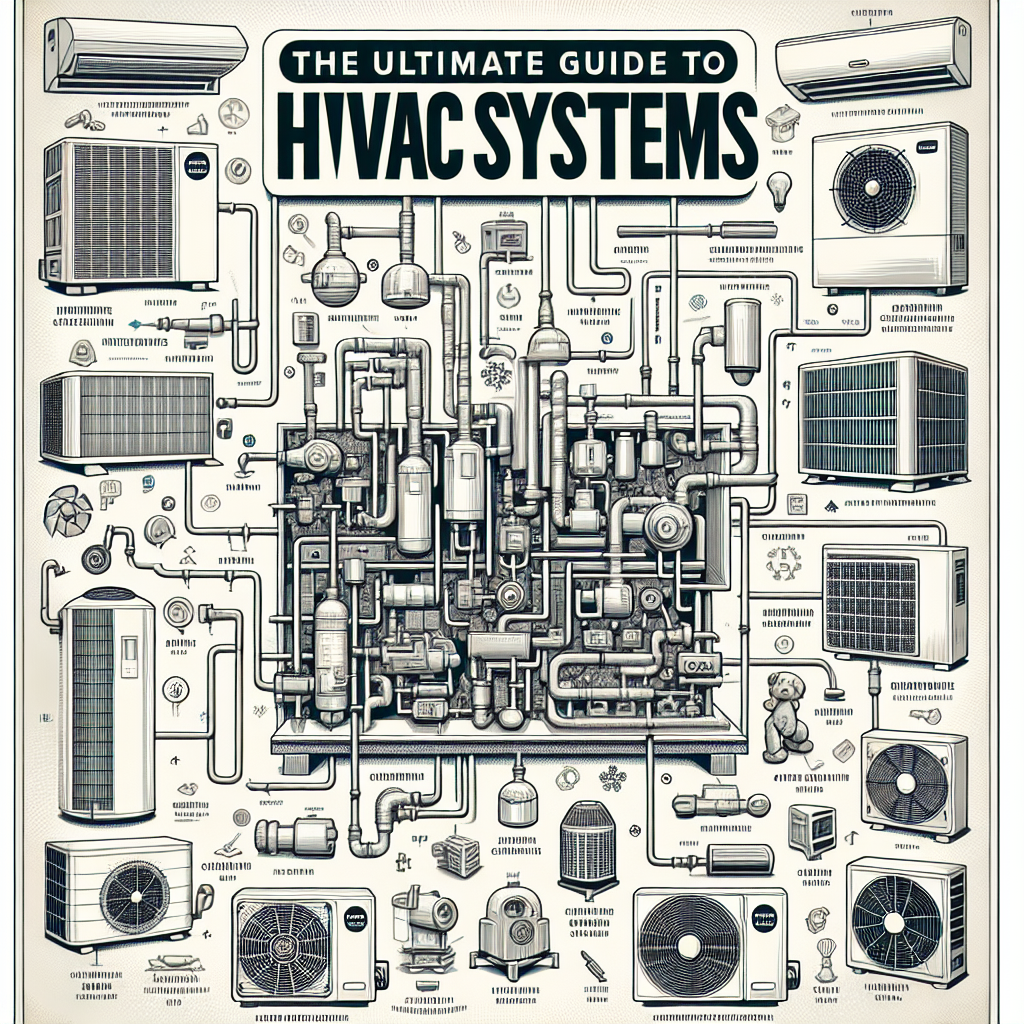
Improving Indoor Air Quality with your HVAC System
In today’s modern world, where we spend a significant amount of time indoors, it is crucial to prioritize the quality of the air we breathe. Poor indoor air quality can lead to various health issues such as allergies, respiratory problems, and even long-term diseases. This is where an HVAC system comes into play.
An HVAC (Heating, Ventilation, and Air Conditioning) system plays a vital role in regulating temperature and humidity levels within our living spaces. However, it also has a significant impact on indoor air quality. By understanding how your HVAC system affects the air you breathe and implementing certain measures, you can greatly improve the overall indoor air quality of your home or office.
One of the primary functions of an HVAC system is ventilation – the process of exchanging stale indoor air with fresh outdoor air. Proper ventilation helps remove pollutants that accumulate indoors over time and introduces clean outside air into your living space. Ensuring that your HVAC system is well-maintained will guarantee efficient airflow throughout your property.
Regular maintenance includes cleaning or replacing filters to prevent dust, pollen, mold spores, and other allergens from circulating in your indoor environment. Filters act as barriers by trapping these particles before they enter your living space through supply vents. It is recommended to check filters at least once every three months for potential clogs or dirt buildup.
Another way to enhance indoor air quality using an HVAC system is by installing additional filtration systems such as UV lights or electronic precipitators. UV lights are effective at killing bacteria and viruses present in the airstream while electronic precipitators use an electrostatic charge to capture smaller particles like smoke or pet dander that may have escaped standard filters.
Furthermore, maintaining appropriate humidity levels contributes significantly to better indoor air quality. Excessive moisture encourages mold growth while low humidity can lead to dry skin and respiratory discomforts. Your HVAC system should be equipped with humidifiers and dehumidifiers to control humidity levels. Regularly cleaning these components ensures that they are functioning optimally.
It is also essential to address any potential sources of indoor air pollution within your property. Harmful chemicals from cleaning products, paints, or furniture off-gas over time, deteriorating the quality of the air you breathe. Ensuring proper ventilation while using such products can help mitigate their impact on indoor air quality.
Lastly, it is crucial to consider the importance of maintaining a clean living environment when aiming for better indoor air quality. Dusting surfaces regularly, vacuuming with HEPA filters, and keeping pets groomed will minimize allergens and pollutants in your home or office.
In conclusion, taking steps to improve indoor air quality with your HVAC system can greatly enhance your overall well-being. Regular maintenance of filters, additional filtration systems, managing humidity levels, addressing potential sources of pollution and maintaining a clean living space are all essential practices that should be implemented for optimal results.
By understanding how each component works together in your HVAC system and implementing necessary measures accordingly, you can ensure that the air you breathe indoors is as fresh and healthy as possible. Your HVAC system serves not only as a means of temperature regulation but also as an invaluable tool in safeguarding your respiratory health for years to come.
Exploring Ductless Mini-Split Systems for Heating and Cooling
Ductless mini-split systems have become increasingly popular in recent years due to their energy efficiency, flexibility, and ease of installation. Unlike traditional HVAC systems that rely on ductwork to distribute heated or cooled air throughout a building, ductless mini-splits use individual indoor units connected to an outdoor unit through refrigerant lines.
One of the main advantages of ductless mini-split systems is their zoning capabilities. With a central HVAC system, it can be difficult to maintain consistent temperatures in different areas of a building. However, with a ductless system, each indoor unit can be controlled separately, allowing for customized comfort levels in each room or zone.
Another advantage is the absence of ductwork. Traditional forced-air heating and cooling systems require extensive ductwork installation or modifications during renovations or new construction projects. This not only adds significant costs but also takes up valuable space within walls and ceilings. Ductless mini-splits eliminate this issue entirely as they only require small holes for the refrigerant lines and electrical wiring.
In terms of energy efficiency, ductless mini-split systems often outperform traditional HVAC systems. Since there are no ducts involved, there is minimal heat loss from leaks or poor insulation commonly associated with centralized forced-air systems. Additionally, because each indoor unit operates independently, homeowners have greater control over temperature settings which allows for more precise energy usage management.
Installation-wise, compared to other heating and cooling options such as window units or portable heaters/air conditioners – which need constant setup and breakdown – installing a multi-zone mini-split system generally requires little effort from professionals who specialize in these types of installations.
Moreover,Ductless mini-splits also provide excellent options for homes without existing air conditioning infrastructure like older houses that lack conventional central heating and cooling components.Due to its versatility,distinguishing features,and cost-effective solution,it’s becoming quite popular among homeowners.It offers an affordable alternative since you do not need multiple standalone air conditioners,humidifiers,or heaters to maintain the indoor air quality.
In terms of maintenance, ductless mini-split systems are generally easier to upkeep compared to traditional HVAC systems. Regular cleaning of the filters and occasional inspection by a professional should be sufficient in most cases. However, it is still recommended to have an annual service visit from a qualified technician for optimum performance and longevity.
When selecting a ductless mini-split system, there are several factors to consider. First is the capacity or BTU rating of the unit which should match the size of the space it will be cooling or heating. Oversized units may cycle on and off too frequently while undersized ones might not provide adequate comfort levels.
Secondly, homeowners must decide between single-zone and multi-zone configurations based on their specific needs. Single-zone systems consist of one outdoor unit connected to a single indoor unit whereas multi-zone systems can connect multiple indoor units to one outdoor unit, offering greater flexibility in temperature control throughout different areas or rooms within a home.
Lastly,the price range for these systems varies depending on brand,model,number of zones being installed,and any additional features such as WiFi connectivity.But despite having higher upfront costs compared with other options like central HVAC or window units,it provides long-term savings through energy efficiency.While prices vary significantly,a rough estimate for installation ranges from $2,000-$8,000 per zone depending on several variables.For accurate cost estimates,it is recommended that homeowners contact certified professionals who specialize in ductless mini-split installations.
Overall,due to their numerous benefits including energy efficiency,zoning capabilities,ease of installation,and lower operating costs,demand for ductless mini-split systems has been steadily increasing.With advancements in technology,future models may offer even more advanced features making them an attractive option when considering heating and cooling solutions.
The Role of Insulation in Maximizing HVAC Efficiency
When it comes to maximizing the efficiency of your HVAC system, there are several factors to consider. One crucial element that often gets overlooked is insulation. Insulation plays a vital role in regulating indoor temperatures and reducing energy consumption.
Insulation acts as a barrier between the interior and exterior of your home, preventing heat transfer through walls, ceilings, floors, and other surfaces. In hot climates, it keeps cool air inside during summer months; in cold climates, it retains warmth during winter months. By minimizing heat loss or gain, insulation helps maintain a comfortable living environment year-round.
Properly insulated homes require less energy for heating and cooling since temperature fluctuations are reduced. This means that you can save on utility bills while also decreasing your carbon footprint.
The type and quality of insulation you choose can significantly impact its effectiveness. The most common types of insulation include fiberglass batts or rolls, blown-in cellulose or fiberglass insulation, rigid foam boards, spray foam insulation, and reflective barriers.
Fiberglass batts or rolls consist of tightly woven fibers that trap air pockets to reduce heat transfer by conduction. They are typically installed between wall studs or ceiling joists but require careful fitting to avoid gaps where thermal bridging may occur.
Blown-in cellulose or fiberglass insulation is another popular option as it can be easily installed in enclosed spaces such as attics or walls without removing existing finishes. It is blown into place using specialized equipment which evenly distributes the material throughout the designated area.
Rigid foam boards offer high levels of thermal resistance due to their dense composition. They come in various thicknesses and can be cut to fit specific areas like foundation walls or cathedral ceilings with precision.
Spray foam insulation involves spraying liquid polyurethane onto surfaces where it expands into a solid layer upon contact with air. It provides an excellent seal against drafts but requires professional installation due to its specialized application technique.
Reflective barriers are typically used in hot climates to reflect radiant heat away from the interior of a building. They consist of reflective aluminum foil laminated onto paper or plastic, which is then installed in attics or under roofs.
Insulation materials have varying R-values, which measure their thermal resistance. The higher the R-value, the more effective the insulation will be at preventing heat transfer. It’s important to consider your climate and desired level of energy efficiency when selecting insulation with an appropriate R-value for your home.
In addition to proper installation and selection of insulation type, it’s crucial to ensure that there are no gaps or leaks in your home’s insulation. These can allow air infiltration and compromise its effectiveness. Sealing any air leaks around windows, doors, electrical outlets, and plumbing penetrations can significantly improve energy efficiency.
Regularly inspecting and maintaining your HVAC system is also essential for optimal performance. Dirty filters restrict airflow while worn-out components may lead to inefficient operation. By replacing filters as recommended by manufacturers and scheduling professional inspections annually, you can ensure that your system operates at peak efficiency.
In conclusion, insulation plays a significant role in maximizing HVAC efficiency by reducing heat transfer through walls, ceilings, floors, and other surfaces. Properly insulated homes require less energy for heating and cooling while providing year-round comfort. Selecting the right type of insulation with an appropriate R-value for your climate is crucial for achieving optimal results. Additionally, ensuring proper installation without gaps or leaks further enhances energy efficiency. By combining adequate insulation with regular HVAC maintenance practices such as filter replacement and system inspections, you can enjoy both cost savings on utility bills and a reduced environmental impact.
Benefits and Considerations of Geothermal Heating and Cooling
Geothermal heating and cooling systems offer numerous benefits that make them an attractive option for homeowners. These systems utilize the natural heat stored within the earth to provide efficient heating and cooling throughout the year. In this section, we will explore some of the key benefits and considerations of geothermal HVAC systems.
One of the main advantages of geothermal systems is their energy efficiency. Unlike traditional HVAC systems that rely on burning fossil fuels or consuming electricity to generate heat or cool air, geothermal systems harness the stable temperature underground to achieve a more efficient transfer of thermal energy. This results in significant energy savings and lower utility bills over time.
Another benefit of geothermal heating and cooling is its environmental friendliness. By relying on renewable energy from beneath the earth’s surface, these systems produce fewer greenhouse gas emissions compared to conventional heating and cooling methods. Geothermal systems do not burn fossil fuels, eliminating harmful pollutants such as carbon dioxide, nitrogen oxide, and sulfur dioxide that contribute to climate change.
In addition to being environmentally friendly, geothermal HVAC systems also have a long lifespan. The underground components can last for several decades with minimal maintenance requirements. This makes them a cost-effective investment in the long run since they require fewer repairs or replacements compared to traditional HVAC equipment.
Geothermal heating and cooling can also improve indoor air quality. Traditional HVAC units often circulate allergens, dust particles, or other contaminants throughout a home’s ventilation system. Geothermal technology does not involve outside air intake like traditional units do; instead it pulls clean air from below ground where pollutants are less likely present – resulting in healthier indoor air for occupants.
While there are many advantages to choosing geothermal HVAC systems, there are also important considerations homeowners should be aware of before making a decision:
Firstly, installing a geothermal system requires extensive planning due to its unique design requirements such as drilling boreholes into the ground or setting up horizontal loop fields if available space allows it; therefore careful evaluation of the property is necessary to determine its suitability for a geothermal system.
Secondly, upfront costs for installing a geothermal system can be higher compared to traditional HVAC systems. The cost of drilling or excavating for the underground components can be significant. However, it’s important to consider the long-term savings on energy bills and potential government incentives that may offset these initial expenses.
Thirdly, finding experienced and qualified contractors who specialize in geothermal installations might be more challenging than hiring someone for a conventional HVAC unit installation. Due to the specific technical expertise required, homeowners should ensure they work with certified professionals familiar with geothermal systems.
In conclusion, geothermal heating and cooling offer numerous benefits such as energy efficiency, environmental friendliness, improved indoor air quality, and long lifespan. However, homeowners considering this option should carefully evaluate their property’s suitability and factor in upfront costs as well as contractor expertise before making a decision. With proper planning and consideration of these factors, geothermal HVAC systems can provide reliable and sustainable heating and cooling solutions for residential properties.
The Importance of Proper Ventilation in your Home’s HVAC System
When it comes to maintaining a comfortable and healthy indoor environment, proper ventilation is key. Your home’s HVAC system plays a crucial role in ensuring that the air you breathe is clean and free from pollutants. In this section, we will discuss the importance of proper ventilation in your home’s HVAC system and how it affects the overall performance and efficiency of your heating, cooling, and air conditioning.
One of the primary functions of ventilation is to remove stale air from your living spaces and replace it with fresh outdoor air. This process helps control moisture levels, removes odors, and eliminates pollutants such as dust, smoke, pet dander, and volatile organic compounds (VOCs). Without adequate ventilation, these contaminants can accumulate indoors over time, leading to poor indoor air quality (IAQ) and potentially causing health issues for you and your family.
Proper ventilation also helps regulate temperature within your home by allowing hot or cool air to circulate effectively. It works hand-in-hand with your HVAC system by distributing conditioned air throughout different rooms via supply vents while simultaneously removing stale air through return vents. This balanced airflow not only ensures comfort but also contributes to energy efficiency as it reduces the load on your heating or cooling equipment.
In addition to promoting healthy IAQ and maintaining optimal temperature levels inside your home, proper ventilation has other benefits worth mentioning. For instance, it prevents excessive humidity build-up which can lead to mold growth on walls or ceilings. Mold not only damages property but also poses significant health risks when spores are released into the surrounding atmosphere.
Furthermore, good ventilation helps prevent condensation problems that may result in structural damage over time. When moist indoor air comes into contact with cold surfaces like windows or walls without adequate insulation behind them (especially during colder months), condensation occurs – leading to water droplets forming on these surfaces which could eventually cause rotting or deterioration if left unaddressed.
When considering the importance of ventilation, it’s essential to note that different areas of your home may require varying levels or types of ventilation. For example, kitchens and bathrooms typically generate more moisture and odors compared to bedrooms or living rooms. Therefore, installing exhaust fans in these areas can help remove excess humidity and improve IAQ.
Moreover, proper ventilation is also crucial for homes with gas-powered appliances such as stoves, furnaces, or fireplaces. These appliances produce combustion byproducts like carbon monoxide (CO) which need to be vented outdoors safely. Inadequate ventilation can lead to CO buildup indoors – a potentially deadly situation if not detected early on.
In conclusion, ensuring proper ventilation in your home’s HVAC system is vital for maintaining a comfortable and healthy indoor environment. It helps control moisture levels, removes pollutants and odors, regulates temperature effectively, prevents mold growth and condensation problems while promoting energy efficiency. Remember to consult with HVAC professionals who can assess your specific needs based on the size of your home, its layout, and other factors when designing or upgrading your ventilation system
Understanding SEER Ratings: What You Need to Know
When it comes to understanding HVAC systems, one important aspect that homeowners should familiarize themselves with is SEER ratings. SEER stands for Seasonal Energy Efficiency Ratio and is a measure of how efficiently an air conditioner or heat pump operates over an entire cooling season. It provides valuable information on the energy efficiency of these systems, allowing consumers to make informed decisions when purchasing new equipment.
SEER ratings are determined by calculating the cooling output of an air conditioner or heat pump during a typical cooling season divided by the total electric energy input during the same period. The higher the SEER rating, the more efficient the system is in terms of energy consumption.
It is crucial for homeowners to understand that higher SEER-rated systems are not always better in every situation. While it may seem logical that a higher SEER-rated system will provide greater energy savings, this isn’t always true. Factors such as climate, usage patterns, and cost must be considered when selecting a suitable HVAC system.
For instance, if you live in a region with mild summers or don’t use your air conditioning frequently, investing in a high-SEER rated system might not be cost-effective since it would take several years to recoup any additional upfront costs through energy savings.
On the other hand, if you reside in an area with hot and humid summers where your air conditioner runs continuously throughout most of the year, upgrading to a high-SEER rated unit could result in significant long-term savings on your electricity bills.
Apart from personal circumstances and climate conditions affecting your decision-making process regarding SEER ratings, government regulations also play a role. In recent years, there have been stricter guidelines introduced concerning minimum SEER requirements for new HVAC installations. These regulations aim at improving overall energy efficiency across residential properties and reducing carbon emissions associated with heating and cooling processes.
As technology advances and manufacturers strive towards more eco-friendly solutions while maintaining optimal performance standards across their product lines, it’s essential to stay informed about the latest SEER rating guidelines. By doing so, homeowners can ensure they are compliant with local regulations and make choices that align with their environmental goals.
In addition to energy efficiency considerations, it is essential to understand that higher SEER-rated systems often come with a higher initial price tag. Homeowners must weigh the long-term energy savings against the upfront investment required when deciding on an HVAC system for their homes.
Moreover, it’s important not to rely solely on SEER ratings when evaluating different HVAC systems. While SEER ratings provide valuable information on cooling efficiency, other factors such as size, installation quality, and proper maintenance also significantly impact overall performance and energy consumption.
Therefore, it is advisable for homeowners to consult with professional HVAC contractors who have in-depth knowledge of various products available in the market. These experts can help assess your specific needs and recommend suitable options based on factors like climate conditions, usage patterns, budget constraints, and any specific requirements unique to your property.
Understanding SEER ratings is crucial for homeowners looking to maximize their HVAC system’s energy efficiency while minimizing costs. By considering all relevant factors such as personal circumstances, climate conditions, government regulations, initial costs versus long-term savings, and consulting professionals within the industry – consumers can make well-informed decisions regarding their home’s heating and cooling needs.
Exploring Smart Home Integration with Your HVAC System
14. Exploring Smart Home Integration with Your HVAC System
In today’s digital age, it seems that everything is becoming “smart.” From smartphones to smart cars, technology has infiltrated almost every aspect of our lives. And now, even our homes are getting smarter too. One area where this is particularly evident is in the integration of smart home systems with HVAC (heating, ventilation, and air conditioning) systems.
Smart home integration offers homeowners a convenient way to control and monitor their HVAC system from anywhere using their smartphone or other connected devices. But what exactly does this mean and how can it benefit you? Let’s explore further.
One key advantage of integrating your HVAC system into your smart home network is the ability to remotely adjust temperature settings. Imagine coming home on a hot summer day to a cool house without having to manually adjust the thermostat. With smart home integration, you can easily set your preferred temperature before you arrive so that you’re always greeted by optimal comfort.
Another benefit of connecting your HVAC system to a smart home network is improved energy efficiency. Smart thermostats are equipped with advanced features such as occupancy sensors and learning algorithms that optimize heating and cooling based on your behavior patterns. This means that over time, your system will automatically adapt to your schedule and preferences, resulting in energy savings and reduced utility bills.
Additionally, many smart thermostats offer detailed energy usage reports which allow you to track how much energy you’re consuming for heating and cooling purposes. This information can help identify areas where improvements can be made in order to further increase efficiency and lower costs.
Furthermore, integrating your HVAC system into a larger smart home ecosystem opens up opportunities for automation and customization. For example, you could create personalized schedules for different zones in your house or set up geofencing so that the system adjusts itself when no one is at home.
Moreover, some smart thermostats integrate with other connected devices like window sensors or weather stations to automatically adjust temperature settings based on external conditions. This means that your HVAC system can proactively respond to changes in weather, helping you maintain optimal comfort while minimizing energy waste.
In terms of installation and compatibility, most smart thermostats are designed to be compatible with a wide range of HVAC systems. However, it’s always recommended to check the manufacturer’s specifications and ensure that your specific setup is supported before making a purchase.
To set up smart home integration for your HVAC system, you’ll typically need a central hub or gateway device that acts as the brain of your connected ecosystem. From there, you can connect compatible devices such as smart thermostats, sensors, and other appliances using wireless protocols like Wi-Fi or Zigbee.
Lastly, it’s important to note that while smart home integration offers numerous benefits for convenience and efficiency, it does require some initial investment. Smart thermostats are generally more expensive than traditional ones, but the long-term savings in energy costs often outweigh the upfront cost.
In conclusion, integrating your HVAC system into your smart home network opens up a world of possibilities for enhanced comfort control and increased energy efficiency. With features like remote temperature adjustment and advanced scheduling capabilities, smart home integration allows you to customize your heating and cooling experience like never before. So why not take advantage of this technology and make your HVAC system smarter today?
Common Misconceptions about HV AC Systems Debunked
When it comes to HVAC systems, there are several common misconceptions that often lead homeowners astray. In this section, we will debunk these misconceptions and provide you with accurate information about your heating, ventilation, and air conditioning system.
One of the most prevalent misconceptions is that closing vents in unused rooms can save energy. While it may seem logical to close off vents in rooms that are not being used, this can actually disrupt the airflow throughout your entire system. Modern HVAC systems are designed to distribute air evenly throughout the house. When you close vents in certain rooms, it creates an imbalance in pressure and can lead to reduced efficiency or even damage your system over time.
Another misconception is that turning up the thermostat higher or lower will make the room heat up or cool down faster. This is simply not true. Your HVAC system works at a consistent rate regardless of how high or low you set the thermostat. Setting your desired temperature should be based on personal comfort rather than trying to speed up the heating or cooling process.
Some homeowners believe that keeping their AC running all day is more efficient than turning it off while they’re away from home. However, this belief is misguided. Keeping your AC running constantly when no one is home only wastes energy and puts unnecessary strain on your system. It’s best to program your thermostat to adjust temperatures according to when you’re usually at home or away.
It’s also important to debunk the myth that regular maintenance for HVAC systems is unnecessary. Regular maintenance plays a vital role in ensuring optimal performance and longevity of your system. By scheduling annual inspections and tune-ups with a professional technician, potential issues can be identified early on before they escalate into costly repairs or complete breakdowns.
Additionally, some people assume that bigger equipment always means better performance when it comes to HVAC systems. However, this is not the case. Oversized HVAC units can actually lead to short cycling, where the system frequently turns on and off. This not only wastes energy but also puts unnecessary strain on your equipment. It’s crucial to have a properly sized HVAC system that matches the specific heating and cooling needs of your home.
Lastly, it’s important to dispel the misconception that all air filters are created equal. While it may be tempting to opt for cheaper, lower-quality filters, they often do not effectively capture dust, allergens, or other particles in the air. Investing in high-quality filters with higher MERV ratings will help improve indoor air quality and prevent buildup within your HVAC system.
In conclusion, there are several common misconceptions about HVAC systems that need debunking. Closing vents in unused rooms does not save energy; turning up the thermostat does not heat or cool a room faster; keeping AC running all day is inefficient; regular maintenance is crucial; bigger equipment does not guarantee better performance; and all air filters are not equal. By understanding these misconceptions and knowing the truth behind them, you can make informed decisions about your HVAC system and ensure its optimal performance for years to come.In conclusion, “The Ultimate Guide to HVAC Systems: Everything You Need to Know” provides comprehensive information about heating, ventilation, and air conditioning systems. The guide covers various aspects such as system components, types of HVAC systems, maintenance tips, energy efficiency considerations, and troubleshooting techniques. Whether you are a homeowner or a professional in the field, this guide serves as an essential resource for understanding and managing HVAC systems effectively.
